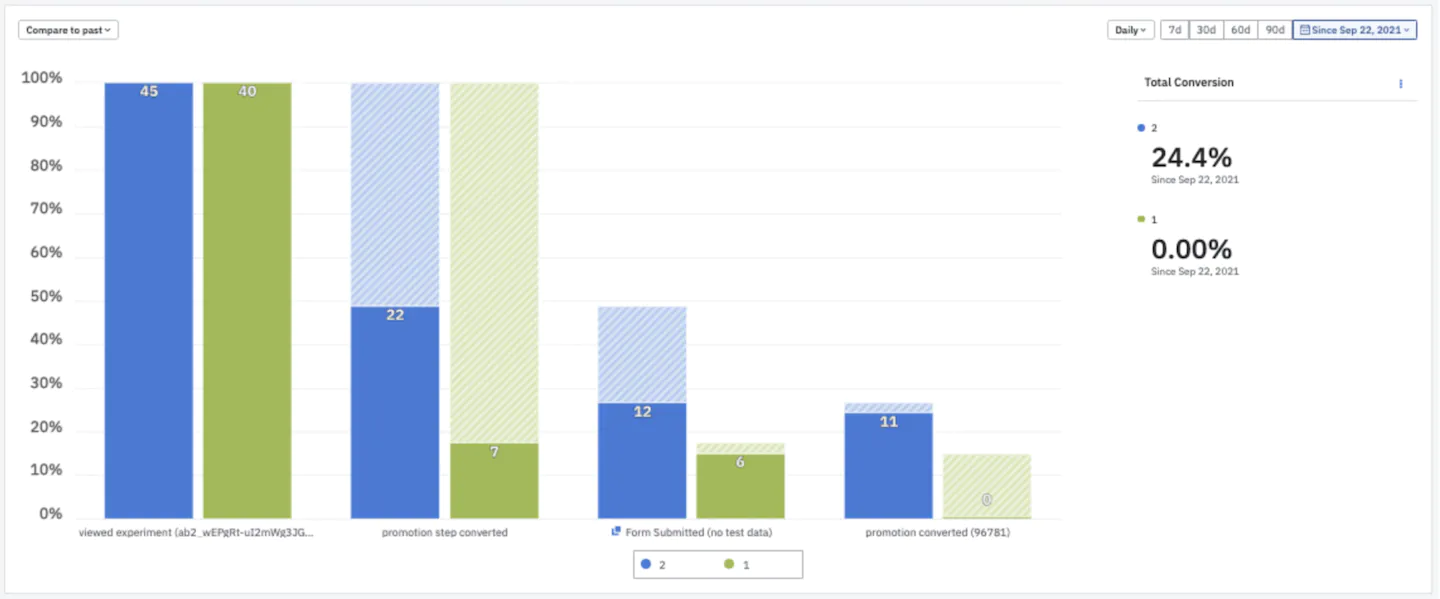What is search engine marketing?
Search engine marketing (SEM) is a digital marketing strategy used to increase the visibility of a website in search engine results pages (SERPs).
While the industry term once referred to both organic search activities such as search engine optimization (SEO) and paid, it now refers almost exclusively to paid search advertising.
Search engine marketing is also alternately referred to as paid search or pay-per-click (PPC).
Why is SEM important?
With an increasing number of consumers researching and shopping for products online, search engine marketing has become a crucial online marketing strategy for increasing a company’s reach.
In fact, the majority of new visitors to a website find it by performing a query on a search engine.
In search engine marketing, advertisers only pay for impressions that result in visitors, making it an efficient way for a company to spend its marketing dollars. As an added bonus, each visitor incrementally improves the website’s rankings in organic search results.
Since consumers enter search queries with the intent of finding information of a commercial nature, they are in an excellent state of mind to make a purchase, compared to other sites such as social media where users are not explicitly searching for something.
Search marketing reaches consumers at exactly the right time: when they are open to new information. Unlike the majority of digital advertising, PPC advertising is non-intrusive and does not interrupt their tasks.
Results are immediate with SEM. It is arguably the fastest way to drive traffic to a website.
How SEM works
Search engines use complicated algorithms to return the most relevant results for each search, including location and other available information.
In paid search advertising, sponsored ads appear at the top of and on the side of search engine results pages to gain more visibility and prominence than organic results.
Let’s say that you are a customer looking for a product or service online. You go to a search engine and type in your search terms (also known as keywords).
On your search results page, you will come across various company ads whose keywords match the keywords in your search.
These ads appear in prominent locations on the page – along with the other search listings that match your keywords. The paid listings are highly relevant to your specific search, making it likely that you will click on them.
Now let’s take a look at how SEM campaigns work from the marketer’s perspective.
SEM networks are self-serve operations. Once a marketer selects a network, they can get a campaign up within a short period of time.
When setting up a campaign within an SEM network, the marketer is prompted to:
- Conduct keyword research and select a set of keywords related to their website or product
- Select a geographic location for the ad to be displayed within
- Create a text-based ad to display in the search results
- Bid on a price they are willing to pay for each click on their ad
Text-only ads are easy to produce. Marketers enter a headline, text for the body of the ad, a call-to-action, and a URL for the hyperlink.
Search engine marketing is considered by many to be the most efficient way to spend marketing dollars.
Examples of search ad networks
The two primary search networks that SEM professionals target are Google Ads (formerly Google Adwords) and Bing Ads.
Google AdWords is actually two networks: Google Search Network and Google Display Network. The first network consists exclusively of search-related websites owned by Google, while the second includes properties such as YouTube, Blogger, and Gmail. Bing Ads allows customers to buy ads on both Yahoo’s network of websites and Bing’s network.
While Google Ads is a much larger network (around 2x the size), the pricing is often lower on Bing Ads. Marketers may be able to get a better rank for a competitive keyword phrase for less than they get on Google. And some report that the clickthrough rates are higher as well.
How A/B testing can complement SEM
Since you are already making an investment in search engine marketing to bring traffic to your website, it is a worthwhile effort to optimize that traffic for conversions and increase the efficiency of your spending.
A/B testing your landing pages is an easy way to maximize your spend, either by optimizing for average order value or revenue per page.
Optimizing your landing page can increase your Quality Score with search engine marketing networks, thus reducing your average CPC.
Optimizely – and other platforms like it – can help you easily structure and implement your A/B tests, offering real-time results to give you confidence in your business decisions. Optimizely has integrations with popular ad networks such as Google Adwords and Facebook that make setting up ad-related experiments quick and easy.
Optimizing Marketing Campaigns
A/B testing can be used to boost the performance of your marketing efforts. Your behavioral data is likely to reveal that customers who convert are likely to share similar behaviors or demographics. You know who you want to target, but the finer points prove elusive:
- What messaging proves most effective at fueling conversions?
- What offer or incentive do prospective or existing customers best respond to?
- Does a different design for a CTA button produce more clicks?
You could construct a campaign based on your experience and gut instincts and hope for the best, but this still carries risk. You can blast emails or paid social posts to the right people while missing the target with your message. The campaign may net many conversions, but you’ll never know if the options you didn’t choose would have brought in more.
A/B tests identify your best marketing options by providing data-backed results. A series of A/B tests may reveal that users respond better to green CTAs than blue ones or that a free trial offer performs at higher levels than a one-time discount. This process helps you minimize spend that would have been wasted on lesser-performing ads.


Split Url Testing
Tweaking a button on your homepage is one thing, but what happens if you want to test out an entirely new page design? Split URL testing takes the concept of A/B testing and expands it to a grander scale. This type of test creates an entirely separate URL so you can completely redesign a webpage from the ground up. Your experimental group can then be funneled to this new page so results can be compared against your existing one.
Split URL testing and traditional A/B testing can be used together to optimize page performance. A split URL test will reveal which of the two designs of the page in question performs best. From there, a series of traditional A/B tests can test user preference for more minute details such as CTA copy, font size, or imagery.
This type of experiment tests options that contain more than one variable. A traditional A/B test may assess which of two CTA button sizes is preferred. Comparatively, a multivariate test could include different CTA sizes, headlines, and images, allowing you to determine which of a slew of options performs best for your campaign.
Multivariate testing is helpful at confirming or negating your assumptions as to what asset out of many will perform best. You may believe that a certain combination of design elements performs best for your target base. By creating versions with alternative variables, you can test your preferred design against many others for an honest account of what performs best.
The chief drawback of multivariate testing is that each additional variable adds another version of the asset that needs to be created. If you want to test five different CTA button shapes, four CTA button colors, and three different fonts, you will need to create 60 (!) different test assets to cover all of your bases.



